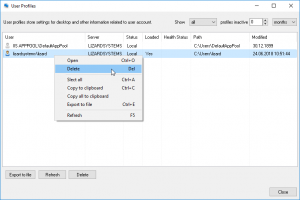

For example, an adversary may enable features such as concurrent Remote Desktop Protocol sessions by either patching the termsrv.dll file or modifying the ServiceDll value to point to a DLL that provides increased RDP functionality. Modifications to this DLL could be done to execute arbitrary payloads (while also potentially preserving normal termsrv.dll functionality) as well as to simply enable abusable features of Terminal Services.

The termsrv.dll file, typically stored in %SystemRoot%\System32\, is the default ServiceDll value for Terminal Services in HKLM\System\CurrentControlSet\services\TermService\Parameters\.Īdversaries may modify and/or replace the Terminal Services DLL to enable persistent access to victimized hosts. Windows Services that are run as a "generic" process (ex: svchost.exe) load the service's DLL file, the location of which is stored in a Registry entry named ServiceDll. Terminal Services allows servers to transmit a full, interactive, graphical user interface to clients via RDP. Microsoft Terminal Services, renamed to Remote Desktop Services in some Windows Server OSs as of 2022, enable remote terminal connections to hosts.

Adversaries may abuse components of Terminal Services to enable persistent access to systems.


 0 kommentar(er)
0 kommentar(er)
